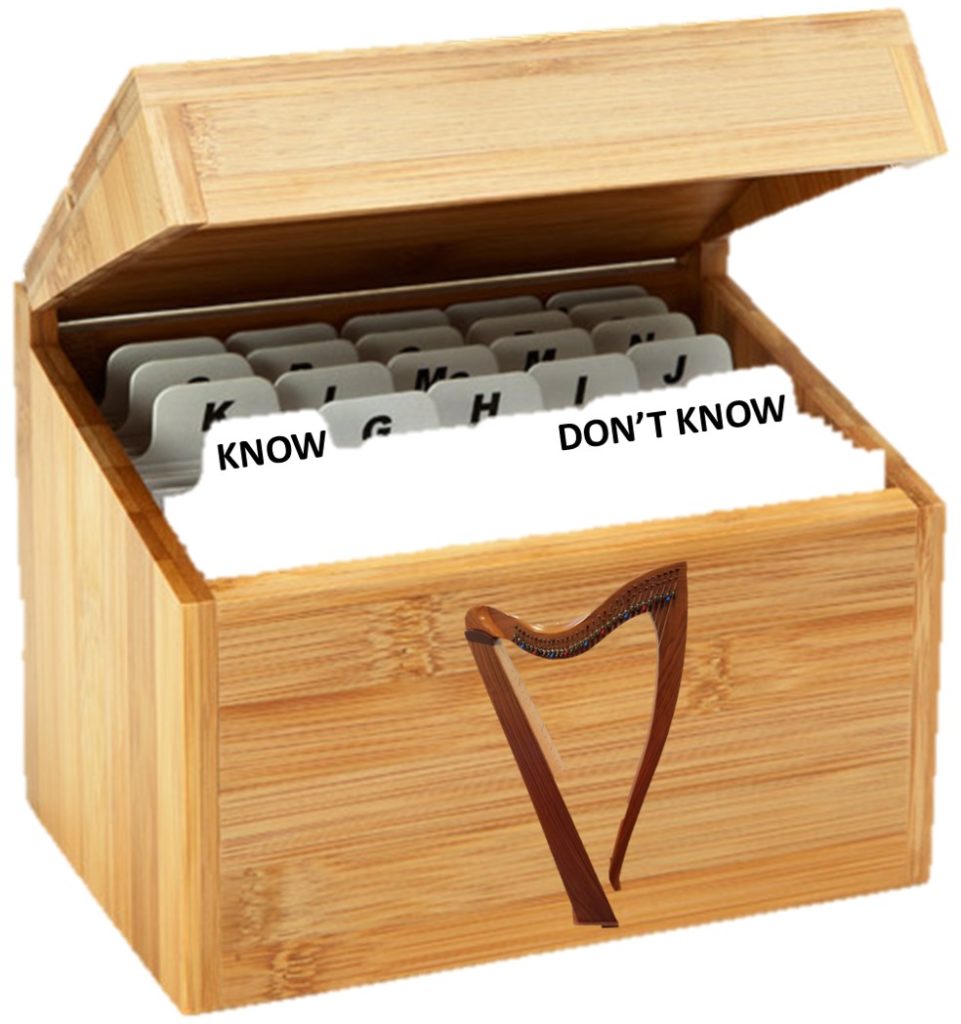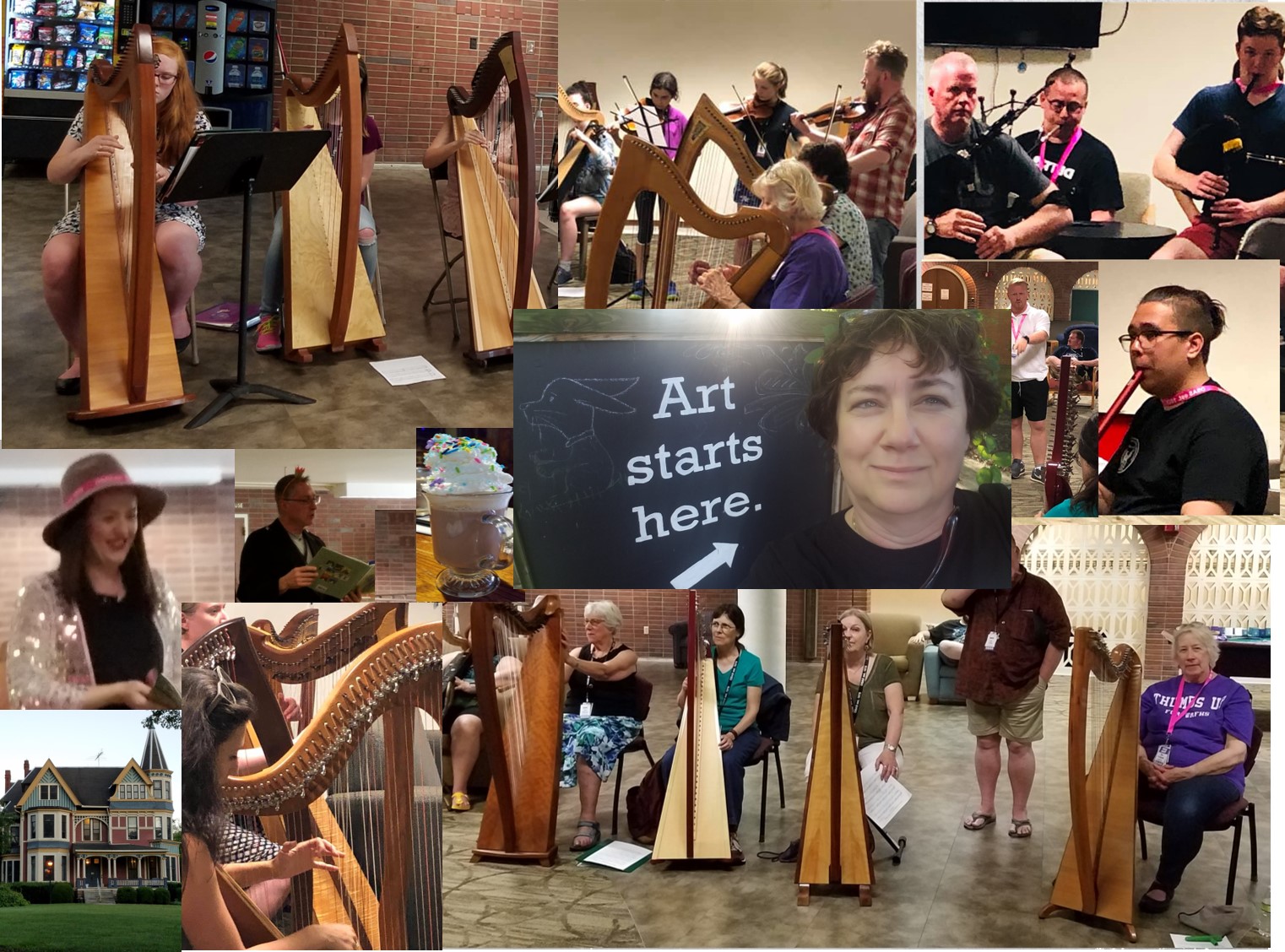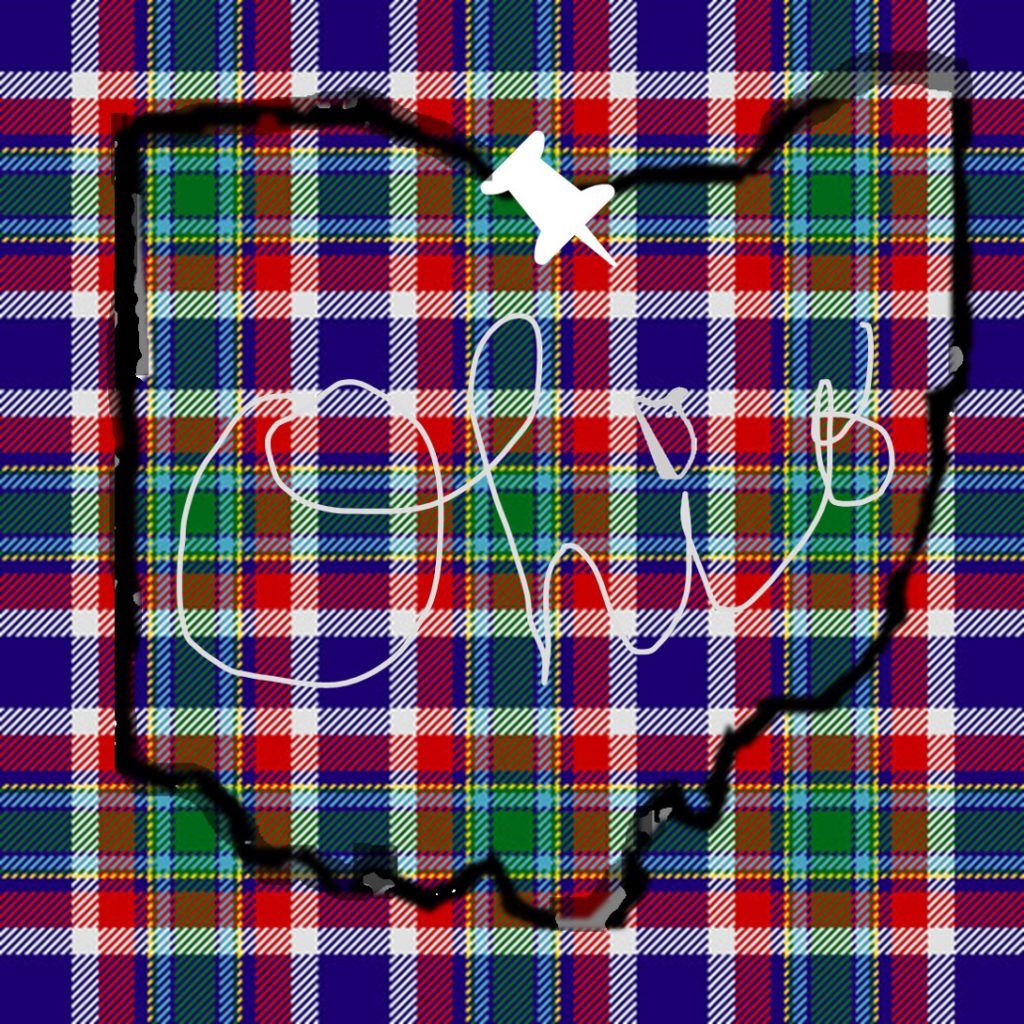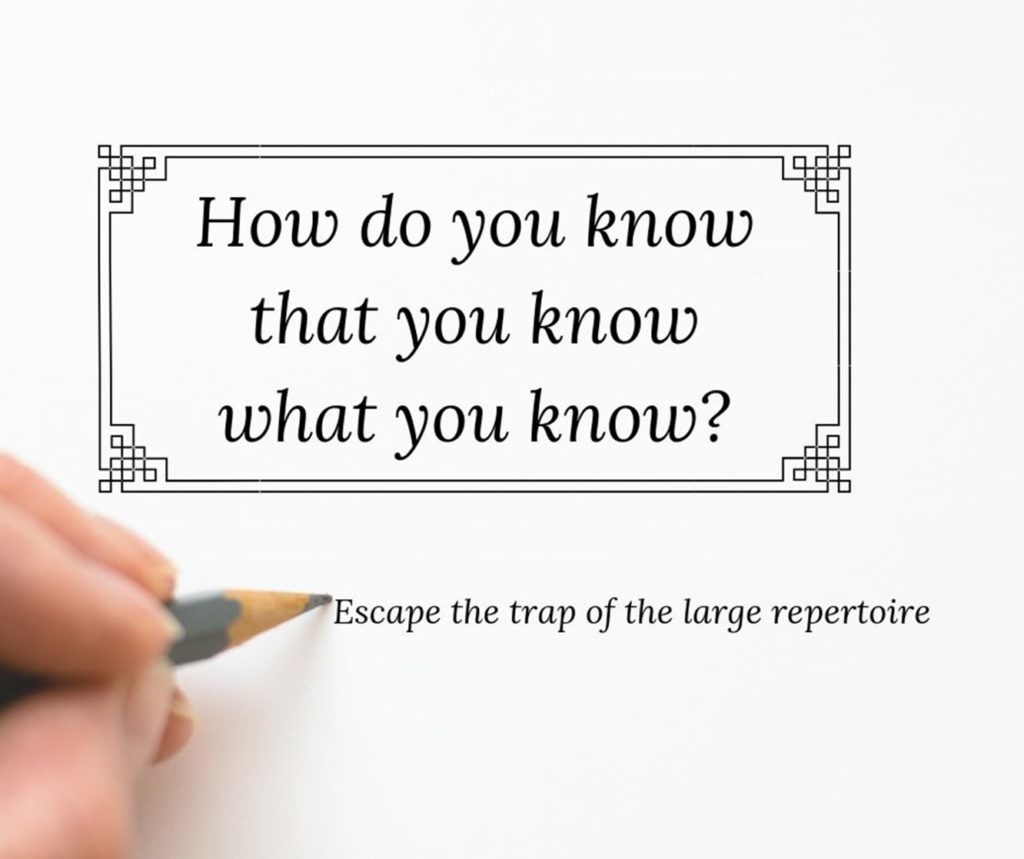Hopefully you believed me and at least started making your index card file. If so, you’ll have started the cards going, and once you’re caught up, adding your new material will require a less herculean effort!
But you’ve asked – now what? What are you supposed to do with this?
Well, there’s a reason I suggested this card catalog rather than just a list (however, if you opted for a list, that’s ok too – keep reading, it’s down below!). If you’ve made a card catalog, no matter if you are sorting by title or by tune type – you should also include another set of divisions:
Know | Don’t Know | Needs Polish
(you can also add additional dividers if you want to be more specific or to fit the way you think about it)
At each practice, you can pull the cards you need. Clearly, you will put the things you are actively working (from the “Don’t Know” section). The tricky bit is what else to pull. It is tempting to think the “Needs Polish” should come out infrequently, but you’d be wrong. These should be in your regular rotation for practice.
 “Needs Polish” is code for, “I’d like to think I know this, but if push came to shove, I’d have to admit that I don’t really know it cold”. So, add those tunes to your regular practice. Also acknowledge that “Needs Polish” may be the weirdest/broadest category, so don’t despair. You will get there if you keep working on these tunes!
“Needs Polish” is code for, “I’d like to think I know this, but if push came to shove, I’d have to admit that I don’t really know it cold”. So, add those tunes to your regular practice. Also acknowledge that “Needs Polish” may be the weirdest/broadest category, so don’t despair. You will get there if you keep working on these tunes!
But how do you use the “Know” cards? Pull one at random from the box at each practice. Play the tune and see how it goes. If you play it well – Yea! and put it back into the box. If it is wobbly when you play it, it goes into the “Needs Polish” section so you can get it back to scratch. And if it is a struggle (or you don’t remember large chunks of it*) put it back into “Don’t Know”. The number of “Knows” you pull out in each practice is up to you (and typically based on how much time you have each day).
If you’ve made a list (or set of lists) here are some other ideas. I’d suggest you use a spreadsheet (so you can move tunes easily from one section to another), but any format that works for you is the right one! You’ll still need to identify your categories and all that is above still applies. When it comes to choosing a tune from the “Know” pile, just close your eyes and point to a title. Or use a random number generator. Or roll some dice. Whatever works – just so you can select a tune to include each day.
No matter if you make cards or lists, you might want to make another, more flexible category and label it ❤ – these are the tunes you’re currently in love with (or just infatuated). We all have them. They are like summer loves – they make your heart go pitter pat just thinking about them. You play them obsessively and to the exclusion of many others. They quickly make the “Know” category. You can even put a ❤ on the card – you love them that much! I suggest this because, as so often happens with summer loves, they flame out quickly, only to be forgotten. When you pull one of these out, it is fun – like pulling out old summer photos. You can play these with a bit of wistfulness, and a chuckle at what you had become so obsessed with at the time. Some will make it back into your repertoire which will be fun. And even if you don’t put it back into your regular repertoire, it will be fun to see how you’ve grown!
You need to manage the number of pieces you’re working on at a time. It is very easy to attempt to work on too many tunes (especially after a great summer event like Ohio Scottish Arts School when you come home with boatloads of new tunes!). You want to work on them all – but you need to pace yourself or you’ll end up with nothing. Using the cards gives you an easy way to keep track of what you need to work on, what you need to polish, what you need to review, and what you want to get to soon.
If you make a plan for each practice you will be able to add tunes, move them along in learning and make strong additions to your repertoire. What are you adding right now?



